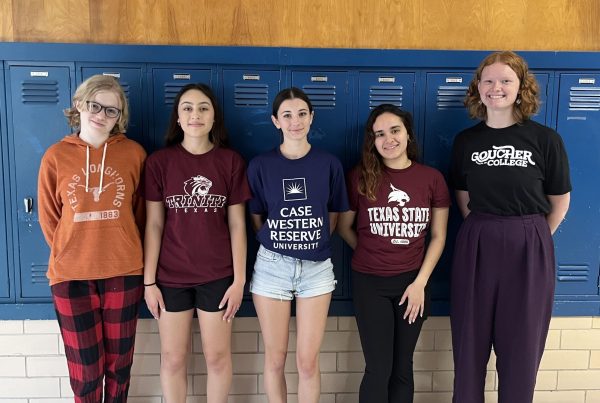Being thrifty saves cash, planet
Now trendy, has thrifting lost what made it cool, affordable, ethical?
While thrifting is still a good a way to find affordable, fashionable items without increasing your carbon footprint, its increasing popularity has made it more difficult to find good deals either in person or online..
In the past few years, you may have noticed an increase in the popularity of secondhand clothing. From local vintage shops to Goodwill and Savers to online shops like eBay and Depop, there’s no question that thrifting is on the rise. But, with it regaining popularity, we have to ask: what are the positive and negative impacts of thrifting?
Senior Sorcha Wilson believes that the positive impacts of thrifting are both environmentally and culturally significant.
The system of “fast fashion,” the rapid production of mass amounts of cheap clothing, has been growing since the 1990s when companies like Zara and H&M started rapidly producing top fashions cheaply to keep up with the high demand for the latest trends. As clothing became more affordable and accessible, people tended to buy clothing more frequently and excessively.
Wilson finds that thrifting or buying secondhand clothing is a more ethical and environmentally friendly option. More thrifting means less waste and support for fast fashion brands that utilize unethical practices.
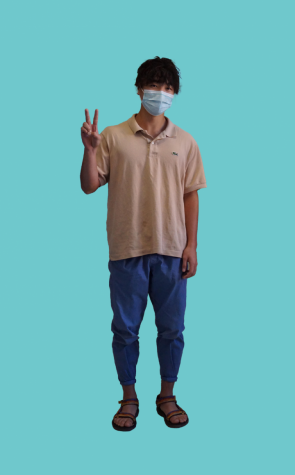
Wilson refers to thrifted leather as an example.
“If you want a way to buy leather, but you don’t want to support that industry, or you don’t want to buy pleather [plastic leather], which is even worse, it is good to get that secondhand,” Wilson said. “It also lasts a lot longer, and you’re not wasting stuff.”
The environmental impact can be seen through larger stores constantly bringing in new clothes that fit the season or latest trends and throwing out clothes that have “expired.” Thrift stores provide a place for brand-new, thrown-out clothes to have a second chance.
“I used to work at a thrift store,” Wilson said. “I think a lot of people don’t realize how much is thrown out that is perfectly fine from big box stores. The clothes have a shelf life, even though it is kind of stupid, and they keep getting new inventory.”
Senior Olivia Linscomb has thrifted all her life and shares Wilson’s sentiments.
“Trends pass so quickly, so people will throw out an item of clothing as soon as they get bored with it” she said. “With thrifting, these clothes can find a new home.”
Senior Wynter Winston has seen the stigma around thrifting shrink as she has grown older and thrifting has become trendy. She’s also noticed the rising prices of secondhand items.
“When I was younger, thrifting was looked at as ‘Oh you’re poor, you can’t shop at nice places,’” Winston said. “Now it is a thing—like at Guadalupe, I used to love it there, but now it is really expensive and they are trying to get rich off of us. Even off of Depop, it seems like they are really trying to scam.”
Similarly, Linscomb has mixed feelings about the stigma around thrifting gradually dissipating.
“I used to be embarrassed of my thrifted clothes, so part of me is glad that it is gaining some popularity,” Linscomb said.
But there is a cost to the trendiness of thrifting.
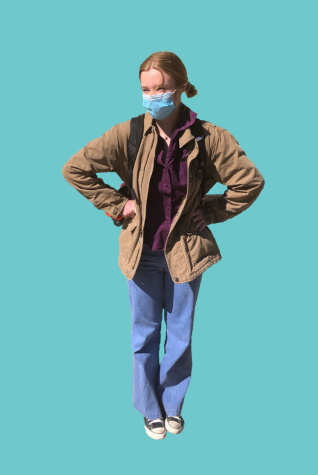
“I have noticed prices in thrift stores have been increasing,” Linscomb said. “Which could be a big problem for people who use them as their main way to find clothes.”
Wilson has also been disappointed by the rising prices as well as the increase in fast fashion clothes being sold at thrift stores—oftentimes sold at no discount.
“Flamingo’s is more expensive, and I can understand why because they carry vintage clothes and more expensive brands,” Wilson said. But Buffalo Exchange is just SHEIN and H&M stuff now, so it would cost the same if you bought it new and it is not well made.”
She also finds an ethical issue with reselling thrifted pieces for a higher price.
“I think people going through and buying clothes from Savers and reselling from there isn’t great,” Wilson said. “A bunch of people buying winter jackets from the thrift store and then reselling them is just driving up the price.”
Linscomb agrees.
“I think people just need to be more aware of where they thrift and what items they thrift.”
Wilson believes that what’s important is the intent.
“We need to talk about sustainable shopping a lot more and ordering less from sites like Amazon. People don’t want to pay a reasonable price for things,” Wilson said.
Wilson, Winston and Linscomb all offered their thrifting recommendations:
“Try the Goodwill bins; you can get a big bag for $10,” Winston said.
“Flamingo’s has really good pants, they sell by the pound,” Wilson said. “Austin Pets Alive is a great thrift store. Big Bertha’s Paradise has a lot of expensive stuff, but it’s a great store. Just be careful about stocking up, reselling and taking all the good stuff.”



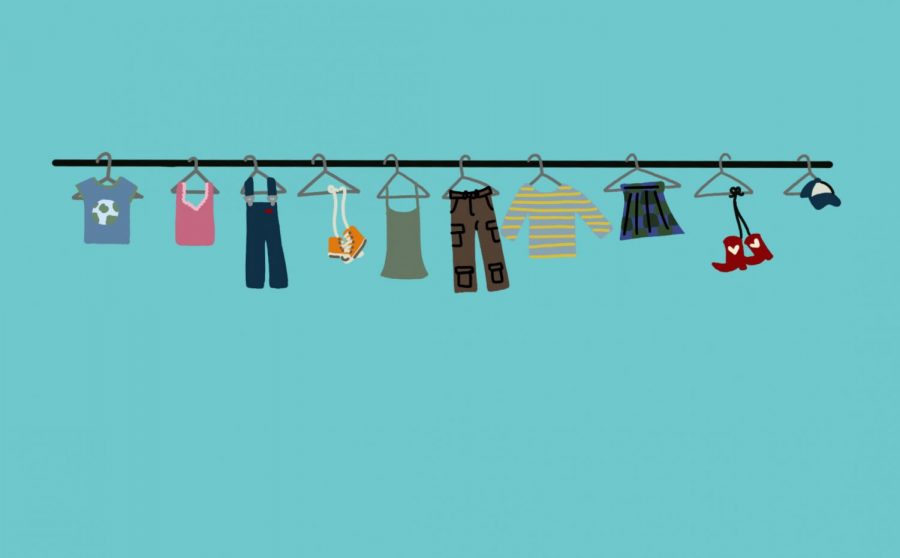

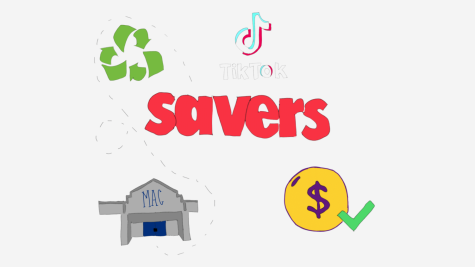
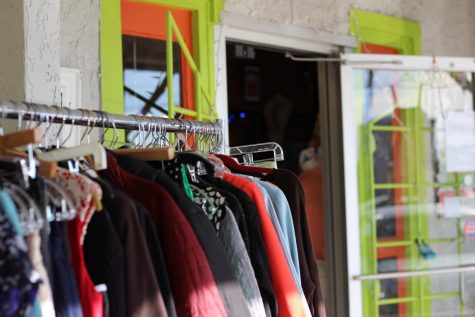
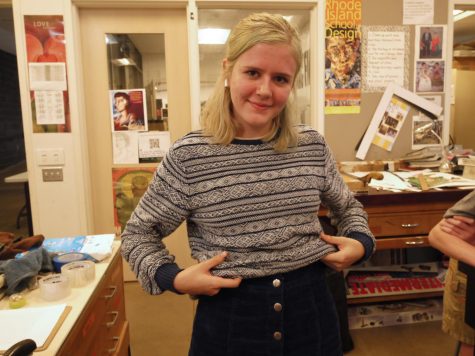
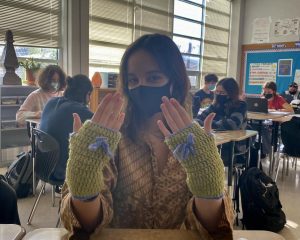

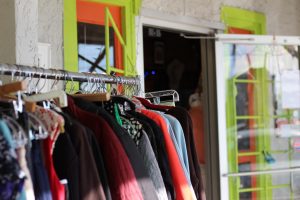
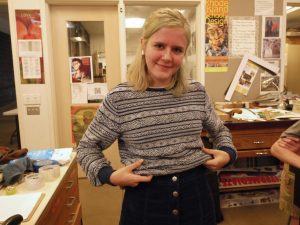


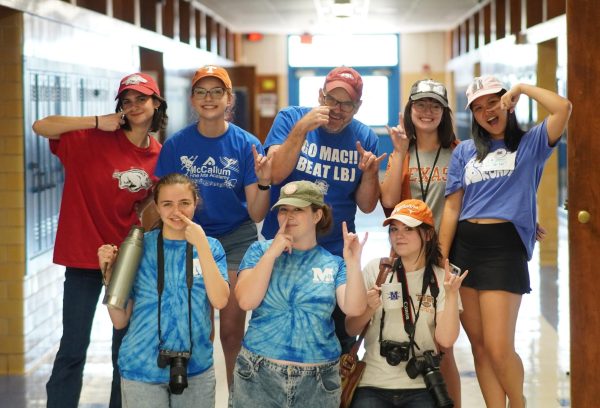
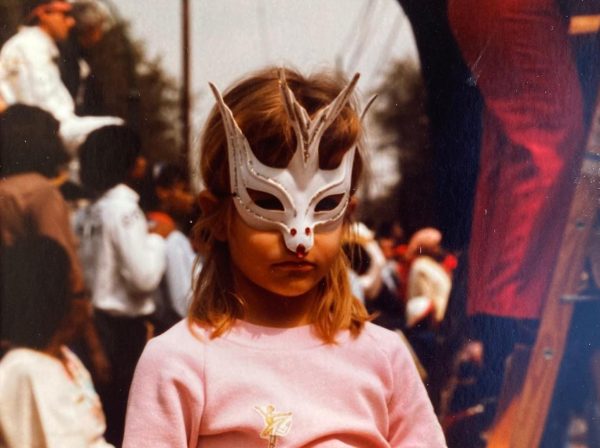
![This is Paul Pews high school graduation photo. The 2023-2024 school year marked his 34th year of teaching. He began his career in Washington, then came to McCallum where he has taught for the past 17. At heart though, he’s really a musician. One that grew up in many different places, including Chicago and California, who took interest in teaching from a young age. His high school choir experience, along with some international singing in college, persuaded him that teaching was his path. He knew he wanted to be able to help create works of art in the fine arts department as well, so he joined McCallum. He’s worked on many of the musicals over the years, even before Joshua Denning, the former theatre director of the fine arts program arrived. Before him was a different director: Tatum.
“I was the music director for all the musicals,” Pew said. “[Mr. Tatum and I] worked very hard, and I just got to the point where I was satisfied with it.” Although he may not be as prominent of a member in the musical theatre community at McCallum anymore, he still plays piano. “I still do a lot of music down at the Music end of the building,” Pew said. Photo courtesy of Paul Pew.](https://macshieldonline.com/wp-content/uploads/2024/07/Paul-Pew-1974-444x600.jpg)

![DANCING QUEEN ONLY 15: The Mccallum quinceañera took place Saturday May 18 in the cafeteria. Students who danced at the quinceañera practiced for weeks during lunch and after school with the help of Señora A to perfect this special moment. “I signed up for fun and for the dress originally, but I actually made a lot of friends, and it helped me want to come back to practice,” said Elizabeth Peables, a freshman quinceñeara. “It’s been stressful, but it always works. We stayed very late yesterday [the day before the event], but today it feels like everything came together.”
Caption by Nellie Eschberger with reporting by Beatrix Lozach.
LA REINA DE BAILE, SOLAMENTE TIENE 15 AÑOS DE EDAD: La Quinceñera de McCallum fue el 18 de Mayo en la cafetería. Estudiantes que bailaron en la quinceañera practicaron por semanas durante el almuerzo y después de la escuela con la ayuda de la Sra. A para perfeccionar este momento especial.
“Originalmente me inscribí para divertirme, y por el vestido, pero actualmente hice muchos amigos y me ayudó a querer regresar a la práctica.” Dijo la estudiante de primer año Elizabeth Peables. “Ha sido muy estresante, pero siempre funciona.” “Nos quedamos muy tarde ayer el día antes del evento pero hoy se siente que todo está cayendo en forma.”
Leyenda por Nellie Eschberger con reportaje de Beatrix Lozach. Traducción por Maverick Palacios.](https://macshieldonline.com/wp-content/uploads/2024/06/53732328578_3ee2526f55_o_53769409497_o-600x338.jpg)


